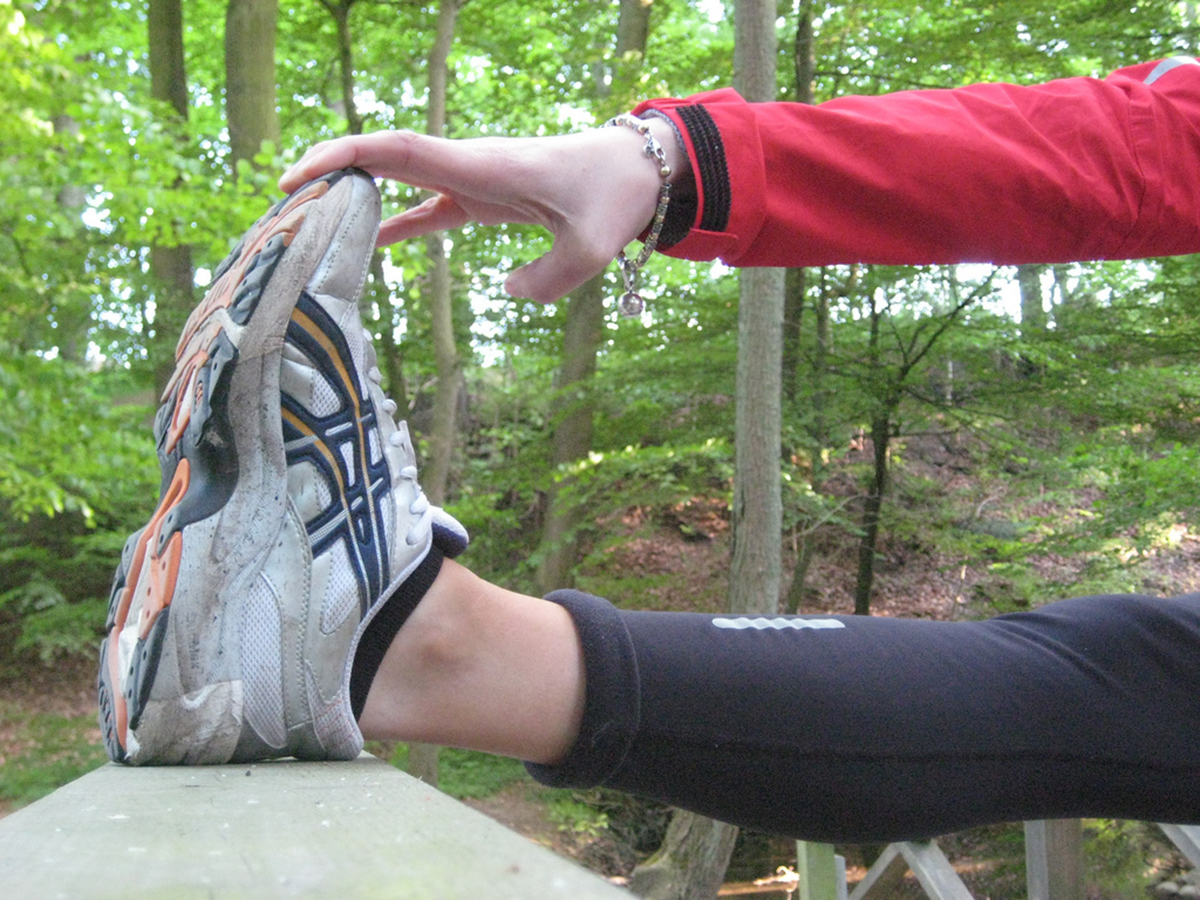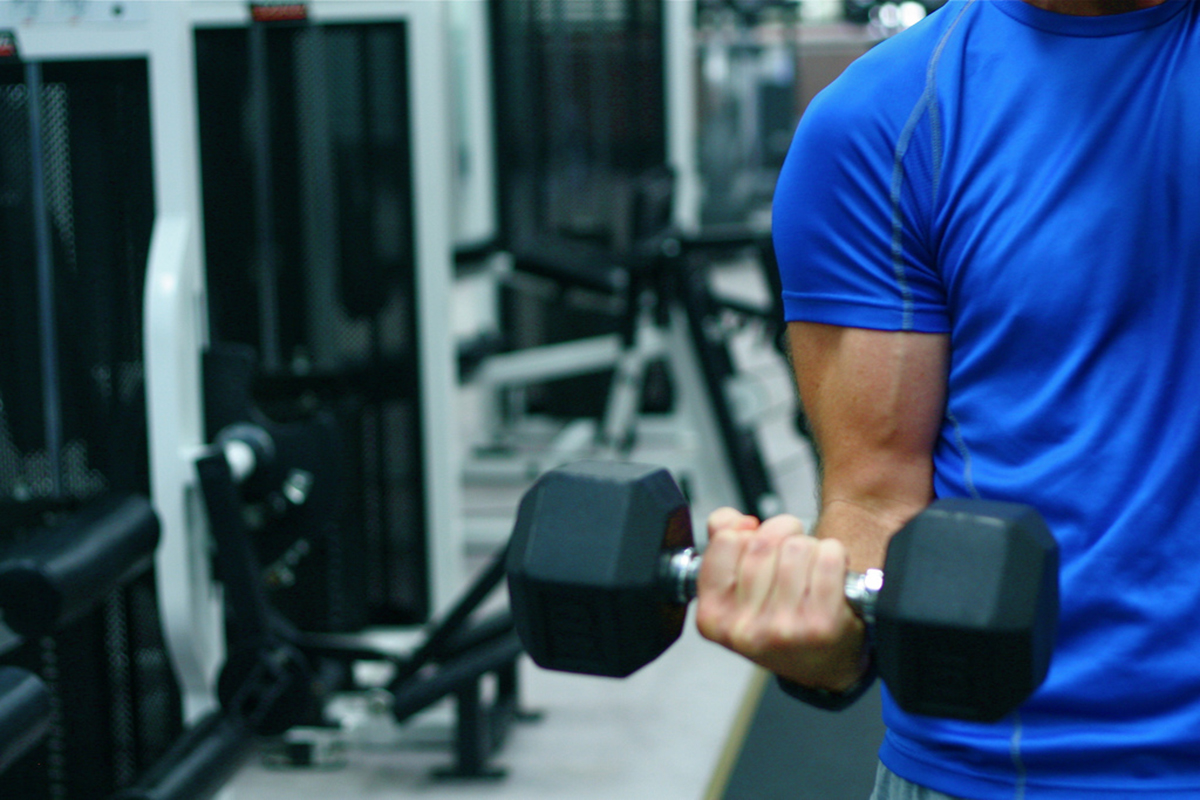How do you exercise when you're carrying a chronic injury? What about if you're too overweight to go running, or in such poor cardiovascular health that you struggle to walk?
How do you exercise when you're carrying a chronic injury? What about if you're too overweight to go running, or in such poor cardiovascular health that you struggle to walk?

Most trainers and instructors don't know what to do with you and most rehab and physio professionals - sadly - don't either.
All too many training plans begin with advice that assumes a basic level of fitness. They don't even think about it - but what use is a training plan that includes push-ups if you can't even do a single bent-knee pushup? What good is it to preach air squats to people with only 30 degrees of knee flexion? 'Beginners'' training plans are all too often simply low-level exercise plans, with no progression planned out - because no improvement is made, or even expected - and no provision for people with injuries.
Meanwhile, at the other end of the scale, you have physios and rehab professionals.
There are honourable exceptions to this, and a great physio is a great person to have on your side.
But a lot of the time, you're stuck doing poorly-coached exercises - like cat-cow stretches - with no way of getting out of the ranks of the walking wounded.
If you can just about walk around, but you can't manage a gym-based exercise class, there's not a lot out there for you, and the explosion in taught classes over the past decade hasn't done much to address that.
For the purposes of this article, I'm using 'chronically injured' to mean 'anything that impairs movement or function for more than a couple of weeks and to a significant degree, but I'm really thinking of people with pretty major injuries. I've helped coach people who were seriously overweight, people with arthritis, people with muscle damage form childhood injuries and people with multiple chronic conditions including stroke injuries. I've even done a gymnastics session with a young man whose collarbone was in two pieces. Doctors had told him to give up on the two pieces knitting back together. I met him when he was on the waiting list for elective surgery to have his collarbone reattached, despite his doctor's advice. He told me his physio had told him to do pushups - which I thought was questionable, but asked him to show me. If I had a video, it would need a parental advisory sticker. His pushup form was horrible - the rehab he was doing was perpetuating his injury. And this was a rehab exercise mandated and taught by a medical professional.
What all these people have in common is that they need to learn to move again.
Yes, people have to have realistic expectations, but even these can be exceeded with moderate long-term effort and sensible coaching.
What's needed in every case is a system that starts where the injured person is, that builds slowly on what they can already do and that has progression built in. Some people can't do pushups, not even on their knees - but they can do them on the wall. Others struggle with any overhead movement but their horizontal pull-push is pretty good. Some people can't squat deep, others hit the floor (literally - I've seen people whose squats are so deep that they wind up with their backsides on the floor at the bottom of the movement), some can't touch their toes. But that doesn't mean they should be resigned to their fate.
How Should You Train If You Have Arthritis
The standard treatment protocol for arthritis is to strengthen the muscles around your joints. Say you have an arthritic knee: many trainers will have you doing leg extensions and leg presses to strengthen the muscles around your knee, building up your quads and hamstrings and strengthening the muscles that run to your hips that control knee stability. All that is good - nobody's knees are too stable, after all - but it's not addressing the problem. Arthritis isn't a muscular condition. It's a breakdown of the joint surface. If your training program isn't aiming to halt and ideally reverse this, it's not addressing the real issue.

So what does help?
First, avoid anything that puts impact on the arthritic joint. Secondly, slowly work up to a natural range of movement, or to the best range of movement you can get with only discomfort or slight pain. Don't work through agony or do anything that feels like it's making things worse. OK, now here's the secret: There is a way to regenerate damaged joint surfaces. It's non-surgical, non-invasive, drug-free, non-denominational and for just $199.00 plus tax I'll tell you what it is.
Just kidding. The really beautiful part? It's free.
Very high repetitions - up in the hundreds to thousands - of impact-free, low-stress movements within a natural range of motion cause joint surfaces to be repaired.
I'm not saying all arthritis is curable and that if yours still hurts it's your fault - but progress is possible. If your arthritis is in your knees, walking is a good choice. We're talking an hour or so a day here, carefully avoiding 'stumping' on the arthritic leg (impact; bad) and moving with the discomfort, but not the pain.
In the arms, there are simple raise-lower exercises derived from T'ai Chi, yoga, ballet or dozens of other movement systems that allow you to move your arms around in a fluid and impact-free way, increasing joint surface integrity and lubrication as you do it. The key issue is to do high repetitions with no load or impact. Just find something repetetive you can do and do it for high repetitions. It's not what anyone wants to hear, and it can feel at first like it's not doing anything. Persevere. It's worth it.
For muscular joint damage and other physical ailments, any exercise system that begins at the beginning and contains progressions will help.
See Also: Rehabilitating An Injury: The Rules
Some people swear by yoga, and it's worth taking a look at the achievements of chronically injured veteran Arthur, who used the yoga system taught by Diamond Dallas Page to radically transfigure his health. I'm not advocating DDP yoga, or any yoga: I'm advocating structured movement that starts with, and builds on, what you can already do.
If you think I've missed out something important, or you think I've hit the nail on the head, get in touch with me in the comments section below and we'll talk about it!
- Photo courtesy of Håkan Dahlström by Flickr: www.flickr.com/photos/dahlstroms/2502353079
- Photo courtesy of Richard Giles by Flickr: www.flickr.com/photos/richardgiles/3178725438
- DDP Yoga - Arthur's Transformation: http://bit.ly/1jqP0oo Healing Cartilage: http://bit.ly/1CYLrzc


Your thoughts on this